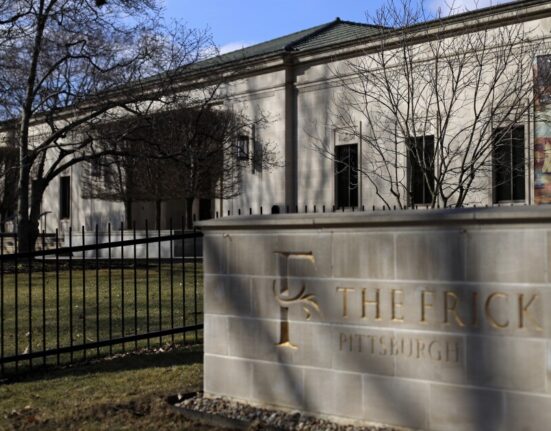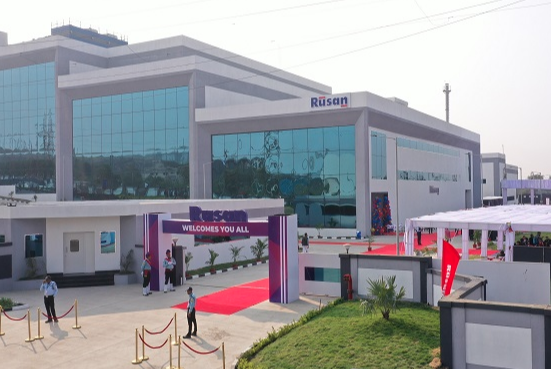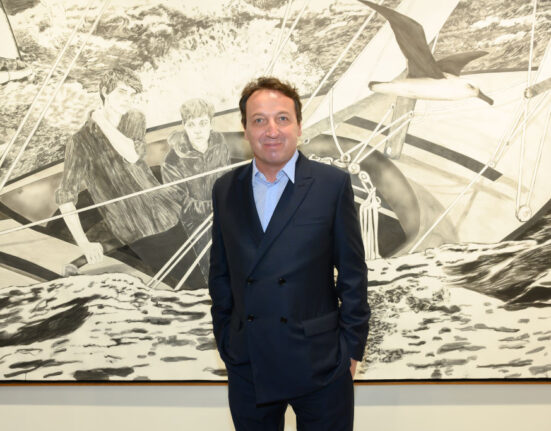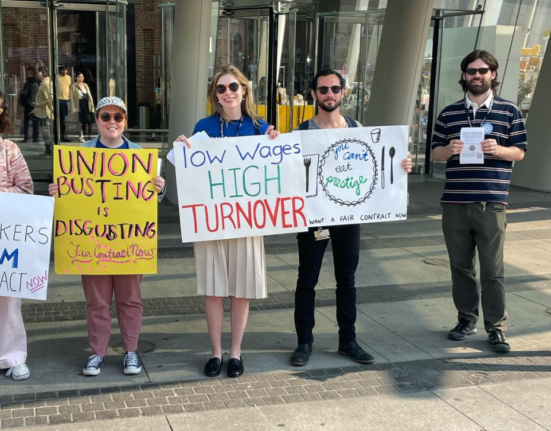A crowd of about 100 people packed a meeting room at the Metropolitan Milwaukee Association of Commerce’s Downtown office last week to explore how Milwaukee can increase its social and economic vibrancy through strategic investment in its diverse creative economy.
The Creative Economy Forum, organized by Imagine MKE, featured several speakers, a detailed overview of the results of the recent Arts and Economic Prosperity Survey conducted by Imagine MKE and Americans for the Arts, and a discussion about opportunities to harness the power of Milwaukee’s cultural and creative assets.
The forum united some of the region’s top civic, business, education and philanthropic leaders.
“We must reframe the way we discuss the arts and the way we champion its impact. For those who don’t get it, a case will need to be made that the arts are not a frivolous nicety,” said Adam Braatz, executive director of Imagine MKE, which works to advance and advocate for the region’s creative economy.

Get your tickets for The Betty Awards!
Join us for the fifth annual event honoring Milwaukee Magazine‘s founding publisher Betty Ewens Quadracci and recognizing maverick female leaders in our community.
Arts are vitally essential to the region’s future prosperity, Braatz said.
“Supporting creative endeavors, arts and artists is an intentional investment and not a handout,” he said. “Everyone values and engages with the arts in one form or another. They permeate our lives and often in ways that are more profound than we realize. Movies, music, books, video games, fashion, theater, architectural design, the images that brighten our spaces and that we put on our desktop computers. The arts enrich our daily lives.”
Braatz stressed that it’s crucial to understand that the arts “aren’t some mysterious force” that autonomously benefits the local economy and the lives of residents and visitors. The “disconnect” in the discussion, Braatz said, is the compensation, public support and financial investment in the arts in the Milwaukee area.
“A prevalent misunderstanding exists about the arts and the creative economy’s role as an economic powerhouse, which it absolutely is,” he said.
Data supports the economic importance of the arts, Braatz said. He pointed to a U.S. Bureau of Economic Analysis reported that revealed that Wisconsin’s arts and culture sector can constitute 2.9% of the state’s Gross Domestic Product, providing over 87,000 jobs and nearly $11 billion in economic activity.
Braatz also quoted from a recent Arts & Economic Prosperity study conducted by Americans for the Arts, which measures the economic impact of the nonprofit arts and culture industry. The study, conducted in 2022, showed that the region’s arts and culture sector generated more than $330 million in economic activity, generated almost $58 million in tax revenue and employed more than 4,500 people.
“States and cities nationwide have realized that deliberate investments in the arts and creative economy yield both social and economic prosperity,” Braatz said.
But he noted that Wisconsin is lagging other states in key components, including ranking 49th in the country in per capita public subsidies of the arts.
“It’s not good,” he said.
Braatz also noted that the state’s art sector has experienced a modest 8% growth since 2020, while nationally the sector surged at 14%.
“As the biggest hub of economic activity in the state, Milwaukee should be leading the way in turning this around, and we can,” he said. “And yet we are combatting a concerning outward exodus of young, diverse creative professionals.”
He pointed to another troubling factor – Milwaukee remains the only city of its size in the nation without a publicly funded office of arts, culture, entertainment and nightlife economy.
Through advocacy and other measures, the region’s arts and culture sector can be boosted, Braatz said. He pointed to the Creative MKE podcast, which is syndicated through WUWM, the flagship National Public Radio station in Milwaukee, which recently was renewed for another season. The podcast is an avenue for sharing the “untold stories of Milwaukee’s vibrancy, excellence and opportunity to lift up the arts and to change the narrative about this city.”
Braatz and others recently met with the state’s elected representatives on Capitol Hill to push for a legislative agenda that would benefit the region’s arts and culture sector.
“We got emphatic support for a revision of the tax code that would make it so that people could use the standard deduction and would be able to itemize their charitable contributions,” he said. “At the state and local level we are advocating for increased funding in any way that we possibly can, whether that be through budget appropriations or stand-alone bills.”
There’s also been a push for tax incentives to bring film and television production to Wisconsin.
“When Netflix has a documentary and they send people into a state, they hire locally,” he said. “They contract, they rent spaces, they hire security, hair, lighting, makeup, lodging and it brings a ton of attention to what we are doing here.”
A healthy arts and culture sector has far-reaching and ongoing economic implications, Braatz added.
“Data overwhelming shows that young professionals seek dynamic, vibrant communities that are amenity rich and have cultural and outdoor activities,” he said. “Talent attracts capital, and vibrant communities with arts and a creative ecosystem at the center attract talent.”
Department of City Development Commissioner Layfayette Crump pointed to a recently completed Downtown plan that sets a target of growing Downtown’s population to 40,000 residents, adding 15,000 housing units, including 3,000 designated as affordable, and boosting the number of Downtown jobs to more than 100,000.
“There’s no question that to be successful in these goals the creative economy will play a very significant role,” Crump said.
He, too, pointed to the Arts & Economic Prosperity study, which showed that spending by arts and culture organizations reached nearly $192 million, and spending by arts audiences more than $142 million on an annual basis.
“That spending in Milwaukee is more than the spending in entire states in the country,” Crump said. “It’s a powerful number and a fantastic boost to our economy.”
He also emphasized that nonprofit arts and culture organizations are businesses and should be treated as such.
“Let’s state that loud and clear. Far too often we treat our arts and cultural institutions as if they are a completely separate part of our economy that don’t have the same needs as other businesses or the same level of impact,” Crump said. “In fact, arts businesses employ people locally, they purchase supplies and services from businesses, and more than that they are a significant part of marketing and promotion of the cities and regions where they are located. Their very act of doing business has a positive economic impact and a multiplier effect.”

Arts and culture also drives commerce to other local businesses, such as restaurants, bars, parking operators and even babysitters, Crump said.
Dale Kooyenga, who will become president of the new Metropolitan Milwaukee Association of Commerce president on Jan. 2, replacing long-time leader Tim Sheehy, stressed the importance of focusing on the factors that make Milwaukee unique, including its vibrant arts and culture scene.
“The story of Milwaukee art is inseparable from our commerce,” he said.
While supporting arts organizations in the region is of vital importance, it’s also essential that artists be fairly compensated for their work, said John Riepenhoff, the new executive director of Sculpture Milwaukee, an annual outdoor public sculpture exhibition focused mainly on Downtown.
“One of the first things that I did was I wanted to measure not only how much of every sculpture Milwaukee dollar spent was spent locally in the greater Milwaukee area but how much of every sculpture Milwaukee dollar spent was spent on artists,” he said.
Introducing art to diverse populations in the region is also important, he said.
“Some of the greatest struggles that Milwaukee has inherited, and we still struggle with today, is being close with diverse populations within our city,” Riepenhoff said. “I’d like to encourage people to reach out and connect with different communities through art.”
Visit Milwaukee President Peggy Williams-Smith noted the overlap between the creative and visitor economies in the region.
“We know that live entertainment, which includes performing arts, concerts, sports events and more, generates about $400 million in economic impact from visitors alone in the Milwaukee area each year,” she said. “I fully believe with all of the smart minds in our midst and through collaboration, we as a community can tackle some of the issues whose resolutions will foster a creative economy that’s even stronger, that lifts up all voices and delivers a future with even more world-class art being made right here in Milwaukee.”







